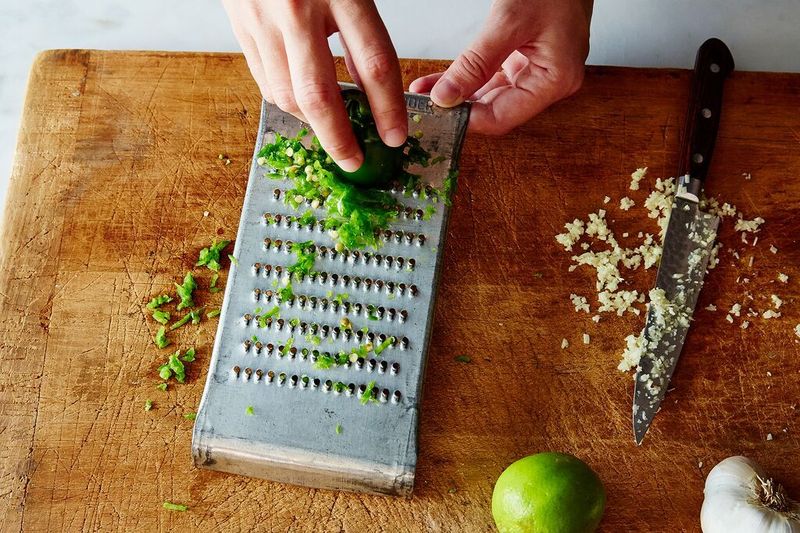Popular on Food52
12 Comments
mrslarkin
November 7, 2016
How did I miss this? So glad it made it into the Genius category. Going to try it with halibut tonight!
Cheri M.
September 23, 2015
I never thought of grating the chillies, I will try that, now I just need to know the best way to freeze red & green chillies as I got a bulk buy! Shall keep them whole/grated, in rings for topping pizzas etc decisions help!
JillN
September 20, 2015
I'm confused (and perhaps need some caffeine). if I grate a pepper...won't I still get capsaicin on my fingers?
Kristen M.
September 21, 2015
Just hold it by the stem end and don't grate down to the point that your fingers are touching any exposed parts and you'll be safe!
Streaper
September 20, 2015
Could you use halibut, cod or tuna for this recipe? I want to try it but do not eat salmon. Thank you.
Kristen M.
September 21, 2015
Yes, absolutely—some may take more or less time to cook, but just keep a close eye on them.
boysenme
September 20, 2015
I like the tip on grating the peppers!
And teachers should know it's "...individuals WHO want to cook...," not that want to cook. Just sayin'....;)
And teachers should know it's "...individuals WHO want to cook...," not that want to cook. Just sayin'....;)
hrnry K.
September 20, 2015
Ive found something even better to use. Lum Taylor BBQ sauce. I use it on eggs poultry beef and fish. Its low sodium for folks like myself that love sauce but due to high blood pressure cant indulge. I found it at Healthy Heart .com. I just read your salmon recipe and 400 degrees for 10ish minutes is to high. I cook my salmon at 350 for ten minutes and dont get a dry piece. I follow the same rule with all filleted fish. I dont do farm raised fish due to the fact they are loaded with antibiotics something I have an allergy towards. Its getting cool out and a nice bowl of mussels are great. Try them they are simple to make you just steam them till they open and then have then with a bowl of butter and alittle ketchup mixed in. They are very sweet but make sure you get them fresh. You dont need to go out to eat well plus they only take minutes to fix . Forget all the wine and stuff they try to dress it up with they are sweet all by themselves. Whats ironic is I learned to cook out of necessity and the fact you really cant trust what you order when you go out to eat. If anyone wants more recipes or questions I will answer all comments.
Sharon
September 21, 2015
There are many ways to cook salmon; grilling, sautéing, smoking, slow roasting, poaching in barely warm oil or court bouillon, to brushing with fat/oil and quick roasting at a high temperature, just to name a few. All yield excellent results when executed properly. 400° for 10 minutes is NOT too high (for a 1 inch thick steak or fillet) and has always resulted in a moist, opaque serving of salmon in professional as well as home kitchens.








See what other Food52 readers are saying.